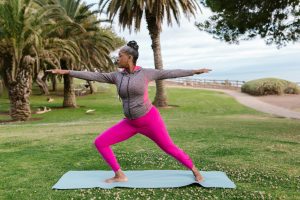
Image courtesy of Pexels
Healthy Living Tips and Resources for Seniors Who Want to Live Well
Living well in your later years isn’t about strict routines or extreme regimens. It’s more about discovering what helps you feel strong, clear-headed, and genuinely fulfilled. For many seniors, small shifts can make a lasting difference. Whether it’s adding a few extra minutes of movement, connecting with others, or finding a smarter way to hydrate, the right habits can sharpen your daily rhythm and give your body and mind the support they need. Below, you’ll find practical, doable strategies for boosting wellness, energy, and safety, no matter your starting point.
Create a Safe and Comfortable Home
A healthy lifestyle starts at home. Many seniors overlook environmental hazards until they become a problem. Take time to adapt your home for safer aging in place by installing grab bars, improving lighting, removing trip hazards like loose rugs or wires, and adjusting furniture spacing for easier navigation. Even small changes, like non-slip mats or better step lighting, can significantly reduce fall risks. Your living space should feel both functional and calming, and it should be a place that helps you thrive instead of posing new challenges.
Support Cognitive Health With Daily Habits
Brain wellness is tied to what you do daily. Research suggests that you can cognitively support aging through lifestyle choices like reading, socializing, meditating, and engaging in mentally stimulating hobbies. Puzzles, learning new skills, and staying curious help form new neural pathways that keep your brain agile. Social interaction is especially powerful for memory retention and emotional resilience. Even a 10-minute chat or shared walk can improve your mental outlook and reduce isolation-related decline.
Stay Hydrated With Smart, Senior-Friendly Habits
As we age, we lose the natural urge to drink water, yet staying hydrated is vital for joint health, digestion, and energy. To simplify hydration, place a reusable bottle within reach at all times and consider setting gentle reminders throughout the day. Experts recommend hydration tips for seniors like consuming water-rich foods (soups, melons, cucumbers) and sipping small amounts before meals. Avoiding caffeine and alcohol helps your body retain water more effectively. When you make hydration part of your rhythm, you’ll notice better focus, digestion, and fewer headaches or fatigue spells.
Try Supplements That Fill Nutritional Gaps
Cooking three balanced meals every day isn’t always realistic. For those who need an energy lift or digestive support, this could be an option. Daily supergreens supplements pack concentrated nutrients into a convenient scoop, making it easier to hit your vitamin and mineral goals. Many seniors use them as a morning habit (either in water, juice, or a smoothie) to help cover any nutritional blind spots. The goal isn’t to replace meals, but to support them with tools that are simple, accessible, and easy on the system.
Move With Purpose and Consistency
Movement keeps your body nimble, but it also boosts your mood and helps with sleep and digestion. You don’t need to sign up for a fitness bootcamp. Instead, aim for 150 minutes of activity weekly, broken into short, manageable sessions. Whether it’s walking around your neighborhood, gardening, or dancing in your living room, what matters is the consistency. Regular movement also improves balance, which reduces the risk of falls, which is one of the most common reasons seniors end up in the ER. Start slow and track your progress. Small wins build powerful momentum.
Prevent Falls With Balanced Movement
The right exercises can help you stay grounded—literally. Falling doesn’t just cause injury; it can shake your confidence. That’s why routines that combine strength, balance, and flexibility training are so valuable. Tai chi, balance drills, and leg-strengthening moves can increase your physical stability and reduce hesitation when walking. Include gentle core work to support your spine and posture. Focus on feeling solid and capable in your daily movements—especially in familiar spaces like the kitchen or bathroom where slips are most common.
Try Low-Impact Fitness for Every Level
Joint stiffness and fatigue shouldn’t be barriers to movement. If standing exercises feel difficult, try chair yoga or light resistance exercises. These options allow you to move within your limits while still getting all the benefits of motion. Water aerobics is another great option that reduces impact while offering muscle engagement. These activities help you build confidence and keep your cardiovascular system active. They’re also social by nature, which gives your brain and heart a bonus boost.
Design a Living Space That Supports Wellness
Finally, your home setup should reflect how you want to live and not just where you happen to be. If you haven’t done so already, find home safety design guidelines for seniors and start making small upgrades. Raised toilet seats, handheld shower heads, and lever-style doorknobs reduce strain. Accessible storage and clear pathways reduce stress and improve independence. Your home should empower you to move confidently, rest easily, and take charge of your daily needs without friction or confusion.
Small Shifts, Big Rewards
You don’t need to overhaul your life to feel better. Start with one habit, one change, and build from there. Wellness in your senior years is less about perfection and more about rhythm and creating routines that fit your real life. Whether it’s sipping more water, joining a walking group, or trying a new supplement, each step helps you feel more in control and less reactive. Make space for what energizes you, and cut down on what drains you. You’ve earned a life that supports your body and uplifts your spirit, and it’s never too late to begin.
Discover a wealth of resources and support for aging gracefully at Born to Age, where compassion meets practical guidance for every stage of life.

